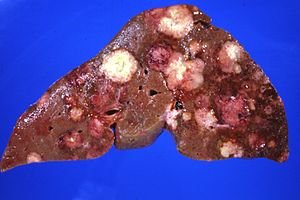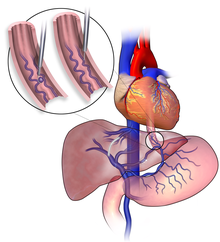The gallbladder is a small, pear-shaped sac located under the liver on the upper right side of the abdomen. The main function of the gallbladder is to store and concentrate bile, a yellowish-brown digestive fluid produced by the liver. Bile helps break down fats in the small intestine during digestion. Gallstones, which are hardened deposits of bile, can form in the gallbladder and block the passageway of bile. This can cause severe pain in the abdomen. The hydropic gallbladder is a condition that occurs when the gallbladder is filled with fluid. It may be caused by blockage of the cystic duct or bile ducts, or by conditions that prevent the normal flow of bile into the gallbladder. Treatment for hydropic gallbladder typically involves surgery to remove the gallbladder.

What is Hydropic Gallbladder?
The gallbladder is a small sac-like organ that stores bile, which is produced by the liver. Bile helps to break down fats in the digestive process. Sometimes, the gallbladder can become filled with too much fluid, which is called hydropic change. This can happen for a variety of reasons, including:
- blockage of the bile ducts
- liver disease
- certain medications
Symptoms of hydropic change in the gallbladder include:
- pain in the upper abdomen, often on the right side
- bloating
- nausea and vomiting
- fever
- jaundice (yellowing of the skin and eyes)
If you experience any of these symptoms, it’s important to see your doctor right away. They will likely order tests, such as an ultrasound or CT scan, to confirm the diagnosis. Treatment for hydropic gallbladder typically involves removing the excess fluid through a procedure called drainage. In some cases, surgery may also be necessary to remove the gallbladder.

Symptoms of Hydropic Gallbladder
The hydropic gallbladder is a condition in which the gallbladder becomes filled with fluid. This may cause the gallbladder to become enlarged and distorted. Symptoms of hydropic gallbladder include pain in the right upper abdomen, nausea, vomiting, bloating, and fever. Treatment for hydropic gallbladdeSymptoms r typically involves antibiotics to clear the infection and surgery to remove the gallbladder.
Treatment of Hydropic Gallbladder
The hydropic gallbladder is a condition in which the gallbladder wall is thin and filled with fluid. This can be caused by various conditions, including liver disease, bile duct obstruction, or certain medications. Treatment of hydropic gallbladder typically involves addressing the underlying condition that is causing it. If liver disease is the cause, then treatment will focus on managing this condition. If bile duct obstruction is the cause, then treatment will focus on relieving this blockage. Some medications can also cause hydropic gallbladder, so if this is the case, then your doctor will likely switch you to a different medication. In some cases, surgery may be necessary to remove the gallbladder if it is severely damaged or if other treatments are not effective.

Hydropic Gallbladder Care
If you are experiencing hydropic gallbladder symptoms, it is important to seek medical care right away. Treatment for hydropic gallbladder typically includes antibiotics and pain relief medication. In some cases, surgery may be necessary to remove the gallbladder.
If you are diagnosed with a hydropic gallbladder, your doctor will likely prescribe to help clear the infection. You will also likely be given pain relief medication to help manage any discomfort you may be experiencing. In some cases, surgery may be necessary to remove the gallbladder.
The hydropic gallbladder can be a painful and serious condition. However, with proper medical treatment, most people recover fully and experience no long-term complications.
Alternatives to the Treatment of Hydropic Gallbladder
Various alternatives to the treatment of hydropic gallbladder are available, though the most commonly used and effective method is surgery. Other methods include:

Sclerotherapy: In this procedure, a chemical is injected into the bile ducts to help shrink the gallbladder.
Laparoscopic cholecystectomy: In this minimally invasive surgery, small incisions are made in the abdomen and a laparoscope (a small camera) is inserted. The surgeon then uses special tools to remove the gallbladder.
Open cholecystectomy: In this traditional surgery, a large incision is made in the abdomen to remove the gallbladder.
Conclusion
If you experience hydropic gallbladder symptoms, it is important to seek medical treatment and care as soon as possible. This condition can be serious and lead to complications if not treated properly. With the right treatment, however, you can manage your symptoms and live a healthy life. If you have any questions or concerns about hydropic gallbladder symptoms, don’t hesitate to speak with your doctor.
The post Hydropic Gallbladder Symtomps, Treatment and Care appeared first on Gallstone Clinic.